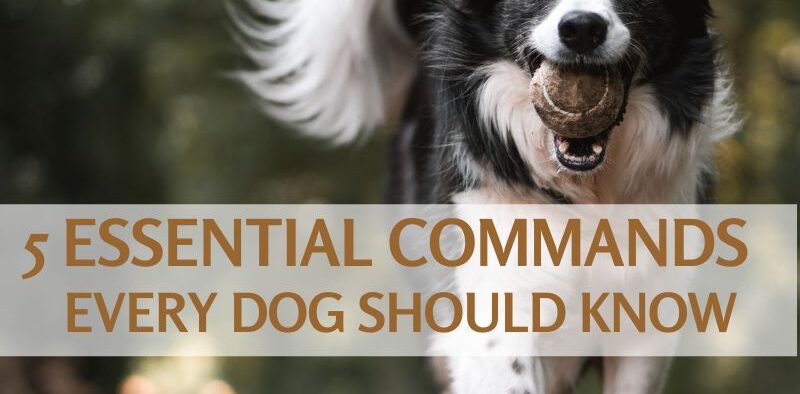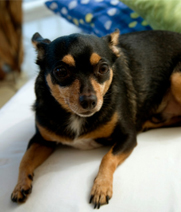Top 5 Training Commands Every Dog Should Master
Share

We’ve talked about “essential training commands” for dogs before, but like all things in life, it’s good to be reminded! Training commands dogs should master boil down to maybe five (of course there are plenty more), but this is manageable.
Living with a dog is an enriching experience filled with unconditional love, wagging tails, and plenty of wet-nosed greetings. But to ensure a harmonious relationship, establishing clear communication is key. Here’s where dog training comes in!
Training dogs to follow commands dogs will not only make your life easier, but will help your dog feel more assured and comfortable. Best of all, mastering these training commands will lay a solid foundation for further training and create a happy, confident canine companion. It’s all about building a foundation for a happy canine companion.
1. Train Your Dog to Come (“Here” or “Come When Called”)
This might be the most crucial training command of all for dogs. A reliable recall ensures your dog returns to you when called, even amidst distractions like squirrels or enticing smells. This is vital for safety, especially during walks or off-leash playtime. This video shows a great way to train this command. If you’re in need of a long lead, I strongly recommend this check cord from Mendota Pet, which comes in a variety of lengths and can be cut to your preferred length.
Training Tips:
- Start in a low-distraction area with high-value treats.
- Say the command in a happy, inviting voice, then immediately reward your dog with a treat when they come.
- Gradually increase distractions as your dog progresses.
- Remember, patience and positive reinforcement are key!
2. Teach Your Dog to Sit
This seemingly simple training command is one your dogs know. The Sit command offers a multitude of benefits. It helps your dog calm down, teaches focus, and provides a foundation for other commands.
Training Tips:
- Hold a treat above your dog’s nose, slowly moving it backward until their rear end touches the ground.
- Say “Sit” as their bottom hits the floor, then reward them with the treat.
- Gradually phase out the lure (the treat moving upwards) as your dog understands the command.
3. Train Your Dog to Stay
This builds on the “Sit” command and teaches your dog to remain in a specific position until released. “Stay” is helpful in various situations, like waiting at doorways or while you grab their leash.
Training Tips:
- Ask your dog to “Sit” first.
- Hold your palm up in front of their face and say “Stay.”
- Take a small step back. If they hold the position, reward them with praise and a treat.
- Gradually increase the distance and duration of the stay as your dog progresses.
4. Train Your Dog to Leave It
This training command may be the most important for your dogs. This command teaches impulse control, preventing your dog from grabbing dropped food, chasing distractions on walks, or snatching objects they shouldn’t have. It also helps remind them they shouldn’t accept treats from strangers. They should also never pick up food off the ground – at least, not in this day and age.
Training Tips:
- Show your dog a desirable object (treat, toy) but hold your closed fist tightly.
- Say “Leave it” in a firm voice.
- If they look away or lose interest, reward them with praise and a treat from your other hand.
- Gradually open your hand further as your dog becomes more reliable.
5. Teach Your Dog Down
Teaching your dog to lie down provides a calming effect and helps them relax. It’s also a useful precursor to other commands like “stay.”
Training Tips:
- Lure your dog into a lying position with a treat moving towards the floor.
- Say “Down” as their body touches the ground, then reward them with the treat.
- Practice holding the position for short durations, gradually increasing the time.
Remember, consistency and positive reinforcement are key to successful dog training. Use short, upbeat training sessions, plenty of praise, and delicious rewards to keep your dog motivated and engaged. With patience and dedication, your furry friend will master these commands in no time, creating a happier, safer life for both of you.
If you’re still in a battle of wills with your dog(s), please consider enrolling in a puppy training or personal training class for a structured learning environment. No dog is beyond training. You may just need to find guidance from a professional trainer.
You May Also Enjoy:




